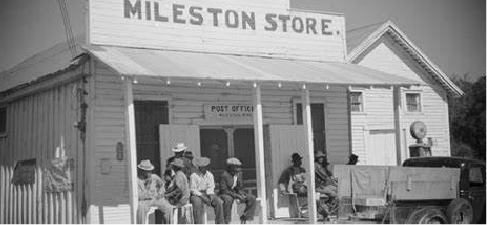You may be familiar with the term food insecurity, but what about food justice? When we think of the word “justice,” we typically associate it with freedom and equality. However, what exactly does that mean in relation to food?
Well, to start off, food justice is defined as “a holistic and structural view of the food system that sees healthy food as a human right and addresses structural barriers to that right.” There are three main principles of food justice and the movement it created: healthy food for all, sustainable food systems, and justice for food workers. The Food Justice Movement works to remedy the role of racist systematic oppression in the history of agriculture and food access.
The movement, as it is known today, was popularized in 1962 during the Greenwood Food Blockade. The blockade took place in the Mississippi Delta. By the 1950s, most African American Delta farmers lived on cotton plantations. They owned small pieces of land called truck patches where they farmed their own vegetables and animals. It was incredibly difficult for these farmers to grow enough food, especially during the winter. The Federal Surplus Commodities Food Program was created to assist farmers in the winter. It provided African American farming families with additional food options, such as flour, meal, and powdered milk. The program was essential to the livelihood of Mississippi Delta area sharecroppers. It provided food to 90% of African Americans during the winter months.
However, the program was administered by the county’s Board of Supervisors, many of whom were members of or affiliated with the White Citizens’ Council. The Council required the program to refuse services to any sharecropper thought to have participated in civil rights activism.
In November 1962, the Leflore County Board of Supervisors cut funding for the Federal Surplus Commodities program, initiating the Greenwood Food Blockade. Due to the Blockade, more than 20,000 sharecroppers lost their food source, “exacerbat[ing] widespread poverty-induced hunger and malnutrition among Delta sharecroppers” (Southern Foodways Alliance). Eventually, the Student Nonviolent Coordinating Committee petitioned the USDA to investigate, prompting the Leflore County Board to reinstate the program by Spring 1963.
Years later, the food justice movement grew in familiarity thanks to the Black Panther Party’s Free Breakfast for Children Program started in 1969. The program launched in Oakland, California after members noticed that “the hunger and poverty in the area made it difficult for children to attend school” (Aspen Institute). The program inspired Congress to increase funding for the National School Lunch Program and to bring the breakfast program to all public schools.
We intend to explore the Food Justice Movement further in the coming months. In future articles, we plan to feature prominent figures in the movement, examples of historical food system injustices, examples of current work in the food justice space, and ways you can help.
Photo Credits: Library of Congress, depicting sharecroppers during the Greenwood Food Blockade


